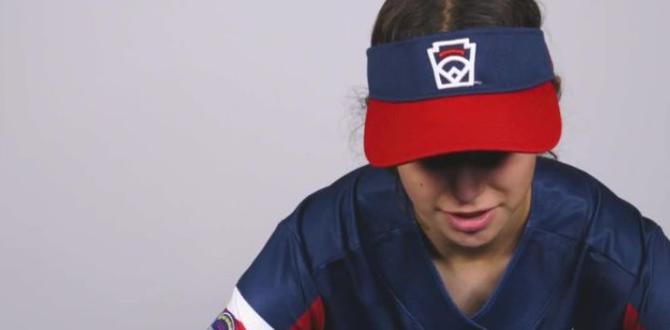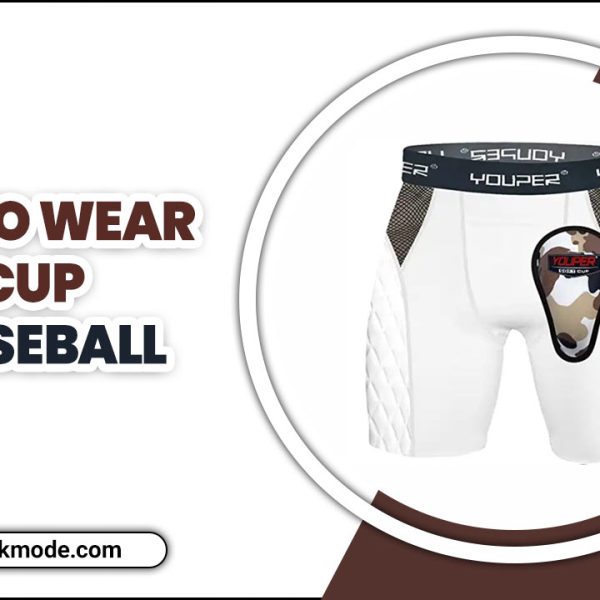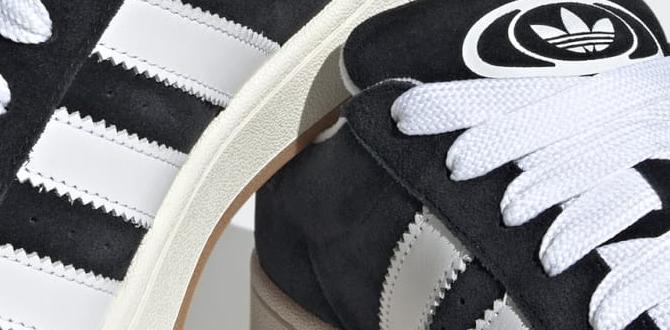Quick Summary: Yes, a Champro catcher’s throat guard is essential protection. It significantly reduces the risk of serious injury to the throat area by absorbing impact from errant pitches or foul tips, ensuring young players can focus on the game with confidence.
Champro Catchers Throat Guard: Your Essential Guide to Staying Safe Behind the Plate
Ever feel a shiver of worry when a wild pitch zips towards home plate, or a foul ball swings unexpectedly close to your catcher’s neck? It’s a common concern for any baseball player, parent, or coach. The catcher’s position is vital, but it also comes with unique risks. Without proper protection, even a small mishap can lead to a significant injury. That’s where a good catcher’s throat guard comes in. It’s a simple piece of equipment, but its role in safety is huge. We’re going to break down exactly why a throat guard is a must-have and how it keeps your catcher safe, so you can focus on playing ball.
Why Every Catcher Needs a Throat Guard
Behind home plate, a catcher is in a prime position to field a lot of action. From blocking pitches to catching pop-ups, the job is intense. It’s also one of the most dangerous positions on the field. The throat area is particularly vulnerable. A simple foul tip or an unexpected bounce can cause serious injury if it hits just right. This is why specific protective gear is so important, and the catcher’s throat guard is a key player in this defense. It’s designed to be an extra layer of protection, working alongside the mask and helmet to safeguard this critical area.
The Anatomy of a Catcher’s Throat Guard
A catcher’s throat guard might look simple, but it’s engineered to do a big job. Most throat guards are made from durable plastic or a strong, impact-resistant material. They’re designed to attach securely to the catcher’s mask. The main goal is to extend the protection downwards, covering the throat and upper chest area that the mask alone might miss. Think of it as a shield that specifically targets the most vulnerable spot.
Champro, a well-respected name in baseball gear, offers throat guards that are known for their durability and effective design. They often feature:
- Impact Absorbent Materials: Built to soak up the force of a hit.
- Secure Attachment Points: Designed to fit snugly onto most standard catcher’s masks, ensuring it stays in place during play.
- Optimized Coverage: Provides ample protection without hindering the catcher’s ability to see or move.
- Lightweight Design: Added protection without unnecessary bulk or weight, so it doesn’t affect performance.
The Protection Power of a Champro Throat Guard
So, how exactly does a Champro throat guard keep your catcher safe? It’s all about impact management. When a baseball, traveling at high speeds, connects with the throat area, the force can be severe. A throat guard acts as a buffer, absorbing and distributing that impact across a wider surface area. This significantly reduces the direct force on the catcher’s neck and throat, preventing serious injuries like throat contusions, fractured cartilage, or even more critical damage to the windpipe and esophagus.
This protective barrier is especially crucial in youth baseball. Young players might not have the same reaction time or protective instincts as seasoned adults. Equipment like the Champro throat guard provides a necessary safety net, allowing them to develop their skills and confidence without the constant fear of injury.
Real-World Scenarios: When a Throat Guard Saves the Day
Imagine these common game situations:
- The Wild Pitch: A pitch gets away from the pitcher and bounces unexpectedly. The catcher lunges, but the ball takes a bad hop, heading straight for their face. The mask protects the front, but the throat guard intercepts anything that might have slipped through.
- The Foul Tip Directly Back: A batter connects with a pitch, but unfortunately, the ball rockets straight back towards the catcher. Without a throat guard, this is a direct hit to a very vulnerable spot. With one, the impact is lessened, potentially preventing a trip to the sidelines.
- Collisions at the Plate: While rare, collisions can happen, and a catcher might be jostled. The throat guard adds an extra layer of security against accidental blows or awkward impacts.
These aren’t just hypothetical situations; they happen in games every day. Having a Champro catcher’s throat guard is a proactive step in ensuring your player is as safe as possible.
Choosing the Right Champro Throat Guard
When you’re looking for a Champro catcher’s throat guard, especially for youth players, a few things matter most: compatibility, material, and fit. Champro makes models designed to integrate seamlessly with their own catcher’s mask systems, but many are also designed to be universal. You want to ensure the guard you pick will attach securely and correctly to the specific mask your catcher is using.
Consider the material. Most are made of high-impact plastics that are both durable and lightweight. The design should offer good coverage without being too bulky or cumbersome. Importantly, look for guards that are specifically designed for the type of play – youth leagues might have slightly different requirements or recommendations than adult amateur leagues.
Champro Throat Guard Features to Look For
Here’s a quick checklist when you’re browsing:
- Universality: Does it fit most standard catcher’s masks?
- Durability: Is it made from a strong, impact-resistant material?
- Secure Fastening: Does it have reliable clips or straps to keep it in place?
- Coverage Area: Does it provide adequate protection for the throat and upper chest?
- Weight: Is it lightweight enough not to impede movement or comfort?
How to Properly Attach and Use Your Throat Guard
Attaching a Champro throat guard is generally a straightforward process, but doing it correctly ensures maximum effectiveness. Most guards attach to the bottom bars of the catcher’s mask.
Here’s a typical step-by-step process:
- Identify Attachment Points: Look at your catcher’s mask. Most will have specific holes or bars where a throat guard is designed to connect.
- Align the Guard: Position the throat guard so its attachment points line up with the designated spots on the mask.
- Secure the Fasteners: This usually involves clips that snap into place, or sometimes screws and nuts for a more permanent fixture. Make sure they are tightened securely but not so much that they could crack the plastic.
- Check for Stability: Gently tug on the throat guard. It should feel firmly attached to the mask and not wobble or shift easily.
- Test the Fit: Have the catcher try on the mask with the throat guard. Ensure it doesn’t obstruct their vision or make it uncomfortable to move their head.
Referencing the manufacturer’s specific instructions that come with your Champro throat guard is always the best practice. They will provide the most accurate guidance for your particular model.
The Benefits of Using a Throat Guard: Beyond Safety
While safety is the primary reason for using a catcher’s throat guard, there are other benefits that contribute to a player’s performance and peace of mind:
Enhanced Confidence
Knowing you have an extra layer of protection can significantly boost a catcher’s confidence. This allows them to focus more on calling pitches, blocking balls, and making plays, rather than worrying about potential injury. Confidence leads to better performance.
Reduced Distractions
A guard that fits properly won’t be a distraction. It stays put, allowing the catcher to concentrate on the game. When gear works as intended, it fades into the background, letting the player perform.
Longevity in the Game
By preventing injuries, a throat guard helps players stay healthy and participate in more games and practices. This consistent play is vital for skill development and overall enjoyment of baseball.
Setting a Good Example
For older players, wearing proper safety equipment sets a positive example for younger teammates. It reinforces the importance of safety gear in baseball.
Champro Catchers Throat Guard vs. Other Brands
When comparing different brands of catcher’s throat guards, Champro often stands out for its balance of quality, durability, and price. Many brands might offer similar features, but the longevity and impact resistance can vary.
Here’s a general comparison focusing on what players and parents look for:
| Feature | Champro Throat Guard | Other Brands (General) |
|---|---|---|
| Durability | Consistently rated high for robust construction designed to withstand impact. | Varies greatly; some are very durable, others can be prone to cracking over time. |
| Fit & Compatibility | Designed for good compatibility with many mask styles, known for secure attachment. | Fit can be hit or miss; some are very universal, others specific to certain mask models. |
| Price Point | Often offers excellent value, providing high-quality protection at a competitive price. | Can range from budget-friendly to premium; depends on brand recognition and materials. |
| Comfort & Design | Generally lightweight and designed not to impede vision or movement. | Some may be bulkier or have designs that could potentially interfere with a mask’s fit. |
For specific models, it’s always good to read reviews on sites like Baseball Express or directly from retailers. Many parents and coaches have found Champro gear to be a reliable choice, especially for youth leagues where budget and durability are key considerations. For instance, searching for “Champro catchers throat guard for youth” will often bring up specific models known for their suitability for younger players.
When Should a Catcher Wear a Throat Guard?
The short answer is: any time they are behind home plate during a game or even during intense practice sessions. This includes:
- Every Game: No exceptions. The risk of a foul tip or wild pitch is always present.
- Practice Drills: Especially any drills that involve live pitching, batting practice, or situations where errant balls are possible.
- Scrimmages: These simulate game conditions and carry the same risks.
It’s not an optional piece of equipment for serious, safe play. Think of it as being as essential as the helmet or chest protector. For youth players, coaches and parents should enforce its use rigorously. You can even check with your local youth baseball league’s official rules, as some may mandate throat guards. For example, organizations like Little League Baseball and USA Baseball emphasize safety equipment requirements for young players. You can often find updated safety guidelines on their official websites (e.g., LittleLeague.org, USABaseball.com).
Maintaining Your Champro Throat Guard
Like all baseball gear, proper maintenance will extend the life of your Champro throat guard and ensure it continues to offer optimal protection. Here are some simple tips:
- Cleaning: After games or practices, wipe down the throat guard with a damp cloth to remove dirt and sweat. A mild soap can be used if necessary, but always rinse thoroughly.
- Drying: Allow the throat guard to air dry completely before storing it. Avoid leaving it in direct sunlight for extended periods, as this can degrade the plastic over time.
- Inspection: Periodically check the throat guard for any signs of damage, such as cracks, deep scratches, or loose attachment points. If you notice any damage, it’s time to replace it. A compromised throat guard can’t offer the protection it’s designed for.
- Storage: Store your catcher’s gear together in a gear bag. Make sure the throat guard is not being crushed or bent in a way that could cause damage.
| Maintenance Task | Frequency | Notes |
|---|---|---|
| Wipe Down | After each use | Use a damp, clean cloth. |
| Deep Clean (if necessary) | Monthly or as needed | Mild soap and water, rinse well. |
| Air Dry | After every cleaning | Ensure fully dry before storing. |
| Inspect for Damage | Before each game/practice | Check for cracks, loose attachments. |
Frequently Asked Questions About Catcher’s Throat Guards
Q1: Is a throat guard really necessary for youth catchers?
Absolutely. Youth players are still developing their reflexes, and a throat guard provides a critical safety buffer against errant pitches and foul tips that can cause severe injury. It’s an essential piece of safety equipment.
Q2: How do I know if a Champro throat guard will fit my catcher’s mask?
Most Champro throat guards are designed to be universal and fit most standard catcher’s masks. However, always check the product description for compatibility information or measure your mask’s attachment points to be sure. Secure attachment is key.
Q3: Can a throat guard affect a catcher’s vision or breathing?
A properly fitted and designed throat guard, like those from Champro, should not significantly impact vision or breathing. They are engineered to provide protection in the lower part of the mask area without obstructing sightlines or airflow.
Q4: How long do catcher’s throat guards typically last?
With proper care and in the absence of significant impact damage, a throat guard can last for several seasons. Regular inspection for cracks or wear is important, and if damaged, it should be replaced immediately.
Q5: What’s the difference between a throat guard and a wire cage extension?
While both offer extended protection, a throat guard is a solid piece of plastic or composite material designed to absorb and deflect impact. A wire cage extension is made of metal bars and is typically integrated into the mask design itself. Throat guards offer a different type of impact absorption.
Q6: Should I consider a throat guard even for batting practice?
Yes, especially if live pitching is involved. Foul tips can occur just as easily during batting practice as they do in a game, and protecting the throat is always a priority for catchers.
Q7: My child plays in a league that doesn’t require a throat guard. Should they still use one?
We strongly recommend it. League requirements don’t always cover every potential safety need. Prioritizing your child’s safety is paramount, and a throat guard is a proactive measure against potentially serious injuries, regardless of league rules.
Conclusion: Protecting Your Young Catcher
As a coach, parent, or player, understanding the importance of protective gear is a fundamental part of enjoying baseball safely. The catcher’s position is crucial to the game’s success, but it also demands the highest level of protection. A Champro catcher’s throat guard isn’t just an accessory; it’s an essential piece of equipment that offers vital defense against dangerous impacts. By providing this layer of security, you empower your catcher to play with greater confidence, focus, and passion, all while minimizing the risk of injury. Investing in a quality throat guard is an investment in their safety, well-being, and continued love for the game.





